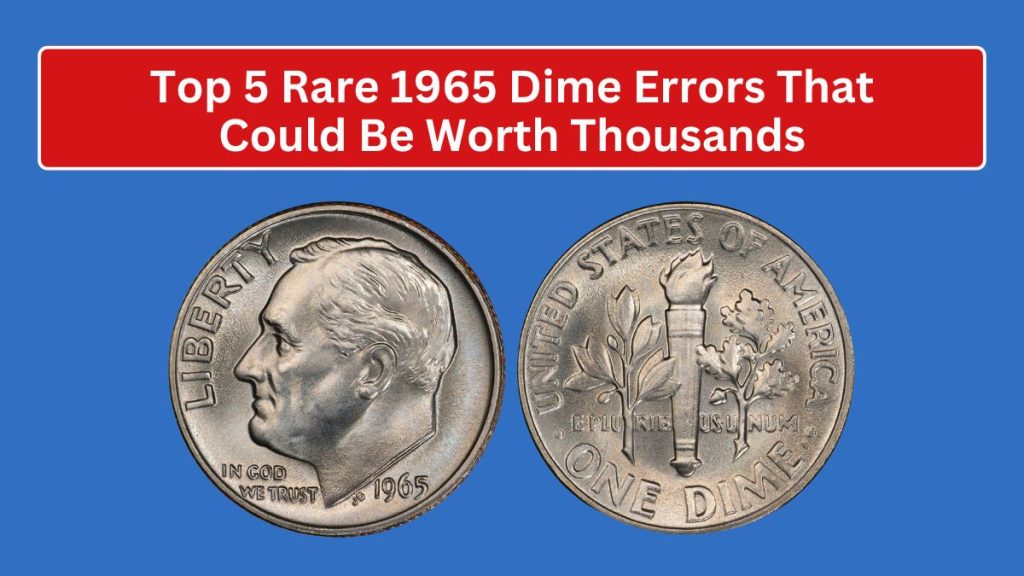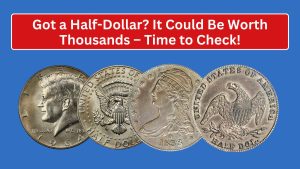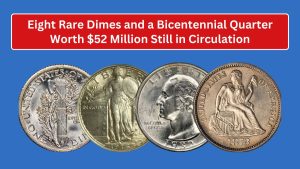The 1965 Roosevelt dime might seem like just another coin from the mid-20th century, but a few rare error varieties have made specific coins from this series extremely valuable. Collectors actively seek out these error coins, and some can fetch thousands of dollars in auctions.
In this article, we’ll explore the top five 1965 dimes with errors worth thousands of dollars, highlighting the unique features and what makes them so valuable.
Rare 1965 Dime Errors That Could Be Worth Thousands
1. 1965 Transitional Silver Error Dime
The most famous 1965 dime error is the transitional silver error, which occurred during the switch from 90% silver coins to the copper-nickel-clad composition. Some 1965 dimes were mistakenly struck on leftover silver planchets from 1964, making them highly valuable due to their rarity.
These error coins weigh slightly more than clad dimes at 2.5 grams instead of 2.27 grams, and collectors are willing to pay between $3,000 and $9,000 depending on the coin’s condition.
2. 1965 Broad Strike Error
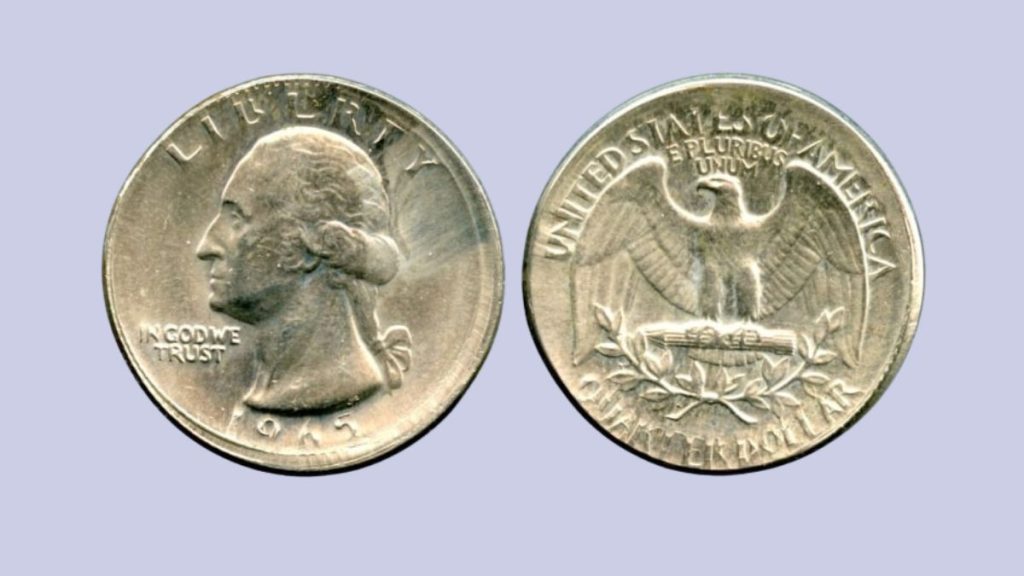
Broad strike errors happen when the coin is struck without the retaining collar, resulting in a coin that is larger in diameter with a distorted design and no reeded edge. Though not as valuable as some other errors, 1965 broad-strike dimes can still command prices of up to $80 for coins in mint condition.
3. 1965 Off-Center Strike Error
Off-center strike errors occur when the coin’s planchet isn’t properly aligned during the minting process, resulting in a portion of the design being absent. The degree of off-centering can range from minor to extreme, with more dramatic examples commanding higher prices.
A well-preserved off-center 1965 dime can be worth around $100, but rare examples with significant off-center strikes have been sold for hundreds to even thousands of dollars.
4. 1965 Clad Layer Missing Error
Some 1965 dimes were struck with missing clad layers, exposing the copper core on one or both sides of the coin. These dimes are lighter than regular coins, weighing approximately 15% less due to the missing outer layer.
The clad error is visually striking, often with one side showing a silver-like appearance and the other a reddish hue. Depending on the severity of the error and the coin’s condition, prices range from $50 to $90.
5. 1965 Die Break (Cud) Error
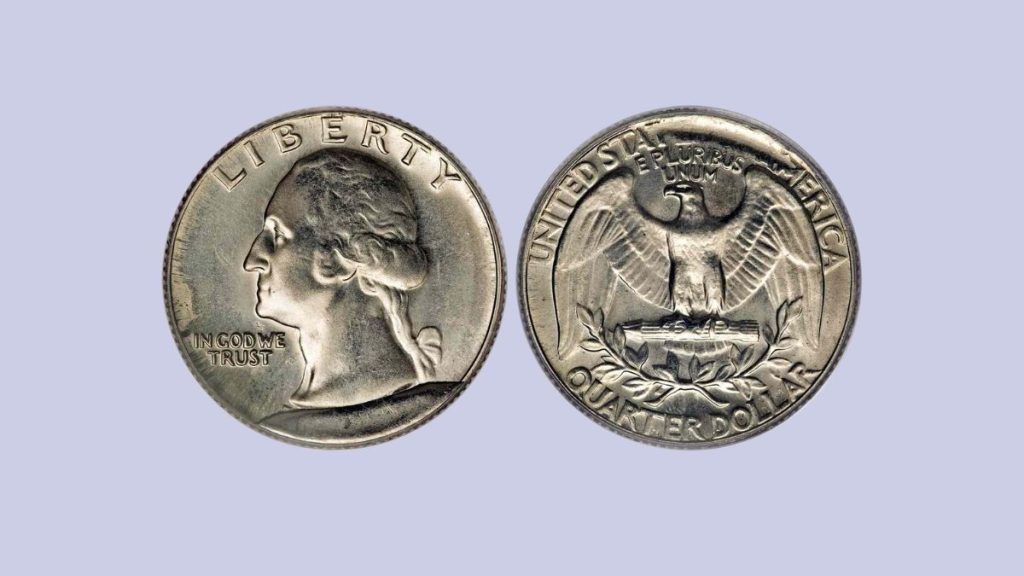
Die break errors, also known as “cud” errors, occur when a portion of the die used to strike the coin breaks off, resulting in a raised, missing portion of the design on the coin.
These coins often feature a blob-like area where details should be, and although they are not as valuable as silver errors, they can still fetch around $20 to $50 depending on the extent of the error and the coin’s condition.
Summary of Top 1965 Dime Errors
| Error Type | Description | Estimated Value (USD) |
|---|---|---|
| Transitional Silver Error | Struck on a 90% silver planchet instead of a clad planchet | $3,000 – $9,000 |
| Off-Center Strike | Coin design is off-center due to misaligned planchet | $100 – $1,000+ |
| Broad Strike | Struck without collar die, resulting in a larger diameter | $80 |
| Missing Clad Layer | Outer clad layer missing, exposing copper core | $50 – $90 |
| Die Break (Cud) | Raised missing portion of design due to die break | $20 – $50 |
How to Identify and Authenticate 1965 Dime Errors
Identifying valuable error dimes can be challenging, especially since many of these errors are subtle. For instance, distinguishing a transitional silver error requires weighing the coin. A silver planchet dime weighs 2.5 grams, while a clad dime weighs 2.27 grams.
Other errors, like off-center strikes or broad strikes, are more visually obvious. However, for errors like the missing clad layer or die breaks, professional grading and authentication are recommended to ensure the coin’s legitimacy and value.
Conclusion
1965 dimes with errors represent a small yet highly sought-after segment of coin collecting. From transitional silver errors to off-center strikes, these mistakes during production have turned otherwise common dimes into valuable collector’s items.
If you’re lucky enough to come across one, it could be worth thousands, but professional authentication is crucial to confirm its value.
FAQs
1. How can I tell if my 1965 dime is a silver error?
You can identify a silver error by weighing the coin. A silver 1965 dime weighs 2.5 grams, whereas a regular clad dime weighs 2.27 grams. Getting it professionally authenticated can also confirm its value.
2. What makes the 1965 dime so valuable?
The value of a 1965 dime comes from its errors, particularly transitional errors (silver planchets) and off-center strikes. Collectors pay high premiums for these rare mistakes.
3. Are all 1965 dimes without a mint mark valuable?
Not all 1965 dimes without a mint mark are valuable. Only dimes with specific errors, like those mentioned in this article, command high prices. Regular 1965 dimes are typically worth their face value unless in mint condition.
4. How much is a 1965 off-center dime worth?
A 1965 off-center dime can be worth anywhere from $100 to several thousand dollars, depending on the degree of the error and the coin’s overall condition.
5. Where can I sell my error dimes?
You can sell error dimes at coin auctions, to professional numismatists, or online marketplaces specializing in rare coins. Ensure the coin is professionally graded to get the best price.
References
- U.S. Coins Guide – 1965 Silver Dime Error: Find Out If You Have A 1965 Dime Worth Money!
- CoinValueChecker.com – 1965 Dime Coin Value (Errors List, “SMS” & No Mint Mark Worth).
- ErrorCoins.org – 1965 Dime Error List & Value.
- PCGS.com – 5 Roosevelt Dimes Collectors Should Look For.

